
- As Infographics and Installation inspired by Nature
In an exact evolutionary sense, Darwin alludes to the Tree of Life as a metaphor for the phylogenetic tree of common descent. But beyond that, the Tree of Life is replete with both myths and historicity. For one, it connects to Heaven and the Underworld while at the same time reaching out to all forms of creation.
It also represents the hierarchical chain of events that brought "everything into existence" because of which, it becomes the Cosmic Tree.
For our contexts, however, while being bathed in the gentle influences of all the above meanings, we begin with the 'Akshaya Vata (the eternal Banyan Tree) from India, since this set of Infographics concern the visualization of data from India.
Because it is for India, what better way but to build up the identity of the tree for our installation by taking inspiration from Ashoka, whose belief in the reverence for all life forms characterized him as a 'deep ecologist'? And whose efforts at protecting forests and animals continue to inspire modern day environmentalists from India.
A very poetic way of characterizing our Tree of Life would be to treat it as the Speaking Tree…a tree replete with wisdom from the past, guiding us through our everyday ways, and helping us see the way Nature touched all facets of life in ancient India, be it while weaving our sarees, making our "lotas", using Nature motifs on our coins, jewelry, paintings or even our masks. These form the separate branch panels on our Tree of Life.
And further, because our environmental beliefs have descended from Buddhist and Jain principles of 'ahimsa' – do no harm to any life form - we get to see the intriguing coexistence of the tiger and deer motifs on some of the artifacts on the leafy canopy of the tree installation, the leafiness representing biodiversity.
Layered over the idea of the Tree of Life as our guiding force for all aspects of life, is an underlying design principle to help us sieve through information and convert this into visually meaningful patterns. That principle has been the transition of the basic visual primitives with which we express our thoughts: the dot, the line, the plane:
- the dot in one-dimensional plane, is the bindi, the force of nature that is the starting point and source of all creativity
- the line as an amalgamation of dots give us the first vestige of two-dimensionality, and
- the plane as a construction of lines, give us the third dimension.
For systematizing the research of visuals that were meant to be Nature inspired, we took
(i) the dot as our primitive (building block), and
1 Dimensional in form, to attribute these to a build-up of our signs and symbols from ancient times;
(ii) the line as a movement from ID to 2D, to represent items in the 2 dimensional, viz., paintings, murals, etc., and lastly,
(iii) the plane as the start of volume, space, planar, to help understand crafts, architecture, sculpture
And overarching these three categories, remain a set of tools researched by us that helped build these artifacts and images in the first place!
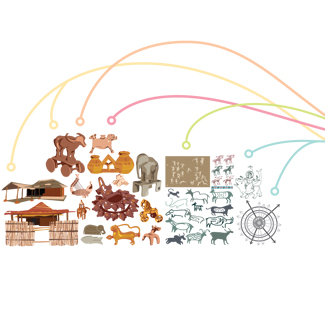
. through the Eyes of the Lens capturing Nature in all its Glory
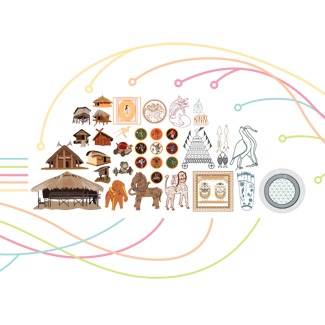
. a Parody on the Lack of Sustainability
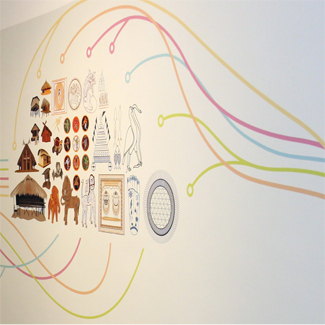
. an Ethnographic (Human) View of Life and Nature
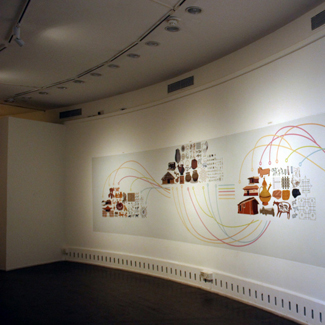
. an Ethnographic (Human) View of Life and Nature
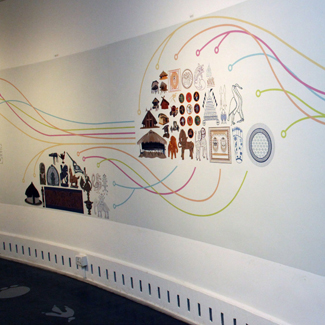
. an Ethnographic (Human) View of Life and Nature
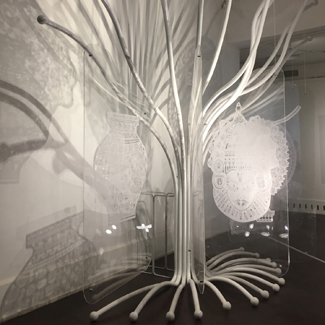
. an Ethnographic (Human) View of Life and Nature
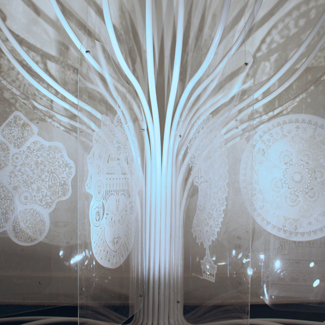
. an Ethnographic (Human) View of Life and Nature
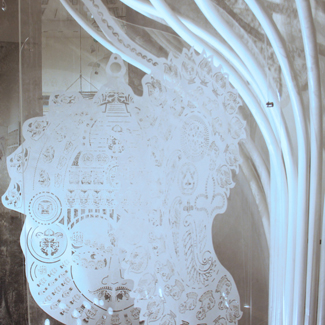
. an Ethnographic (Human) View of Life and Nature

Memories of Nature: Book of Life as Nature-Inspires "A Day in the Life of……
- Installation as Oikos" (God's household):
The inspiration for the Book of Life as a concept came from its traditional meaning: a Book that merits the names of all those who have done good on earth. Taking off from that premise, the Book of Life found Inspiration in the idea of Oikos, the root term for both ecology and economy. When run by the principles of sustainability, Oikos comes to represent God's household, with the connotation that household in turn go to build an economy based on livelihood practices "rather than on accumulation of wealth."
The economy, a stepping stone to Ecology. And the Ecology nested as:
village = many household
planet = many local communities
The tenets of Oikos, therefore, requires that Nature's resource towards a household or economy may not be used as extractive but as and when required, viz., sustainably. Aristotle conceived this ecosystem of good practices as Oikonomia, the management of household with the goal of acquiring only those goods necessary for livelihood. If you did it right for the household, you would ultimately get it right for the planet
Let's now Chalk out one such household bearing in mind the principles of Oikos, viz., prudence and ecological viability to chalk out a "one day in the life of……":
- Man needs a good night's sleep, hence strings a Dream Catcher by his bed:
- Wakes up to be greeted by the sun, Imagining the sun to be a series of wheels from the deep hues of sunrise orange to the lighter shades of yellow as the day goes by: Sun Wheels.
- Works out from a codified set of images, the ad's rhythms of the Sun (rising, setting), the Moon (waxing and waning), and Water (ebb and flow of tide), and ascertains whether he ought to travel, sail of fish, or desist for the day (Day and Night Signs)
- Leaves for the forest to gather food
- Returns to use the Quipu to calculate the day's exchanges of gods and services.
- Get down to "making" the things he need (a house, pot and pans), and so uses Tool from his Cabinet of Curiosity
- At the end of the day, archives the day's activities to see if hr has been prudent (watermarked paper)
- Archiving is also for the generations ahead to understand best practices of ancestors. For that, he goes to the Totem Pole, a place "to express common ancestry", a place to "reimagine human relationships", a place to reaffirm one's relationship with animals and plant species
- Finally, in a cycle of birth, death, and reincarnation, Man reaffirms his existence through a new birth (Birth Symbol)

. through the Eyes of the Lens capturing Nature in all its Glory

. a Parody on the Lack of Sustainability

. an Ethnographic (Human) View of Life and Nature

. an Ethnographic (Human) View of Life and Nature

. an Ethnographic (Human) View of Life and Nature

. an Ethnographic (Human) View of Life and Nature

. an Ethnographic (Human) View of Life and Nature

. an Ethnographic (Human) View of Life and Nature
Address :
IDC School of Design
IIT Bombay,
Powai,
Mumbai, Maharashtra 4000 076
Email :
naturembedded@gmail.com
Phone:
022 2576 4815